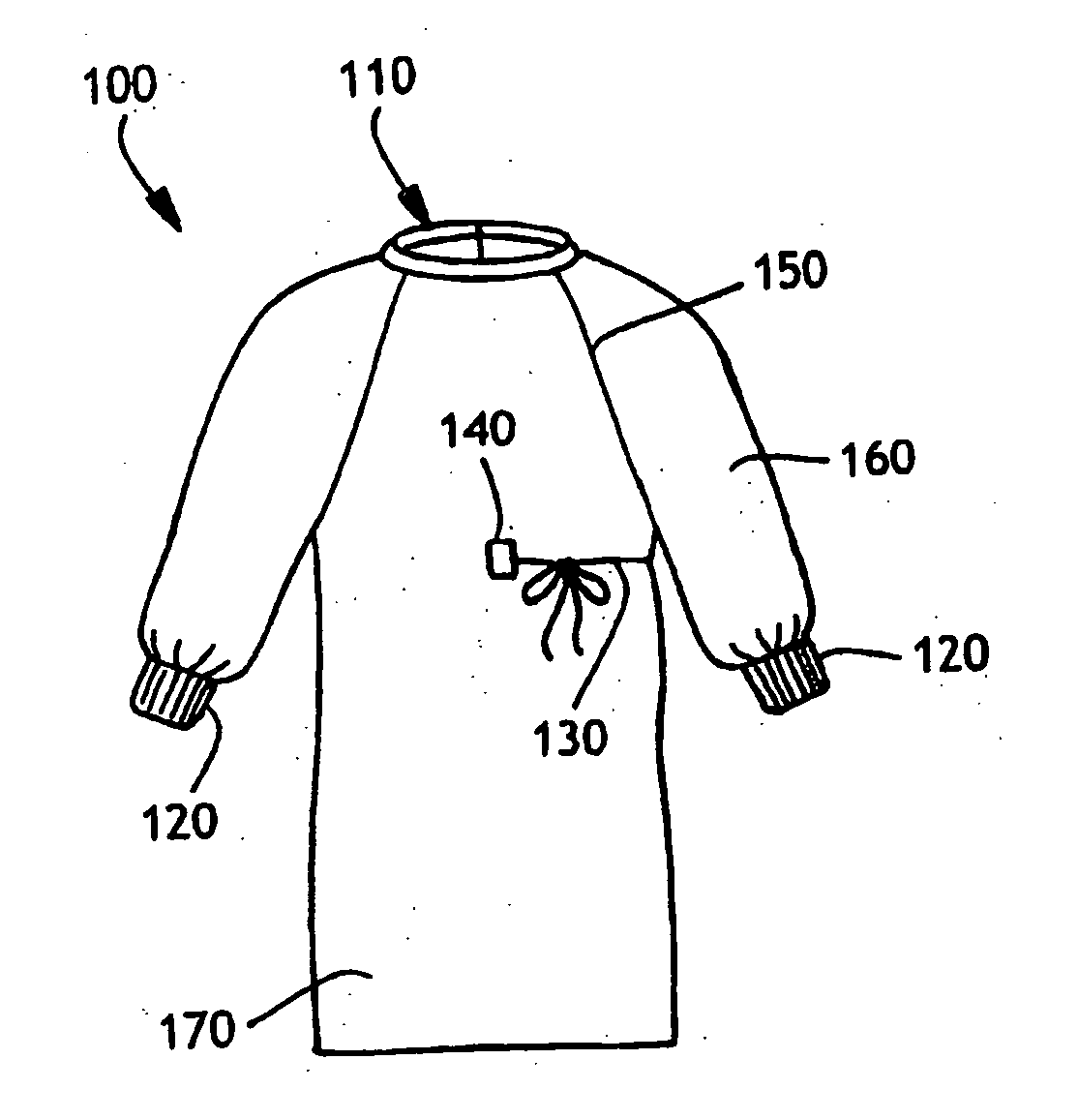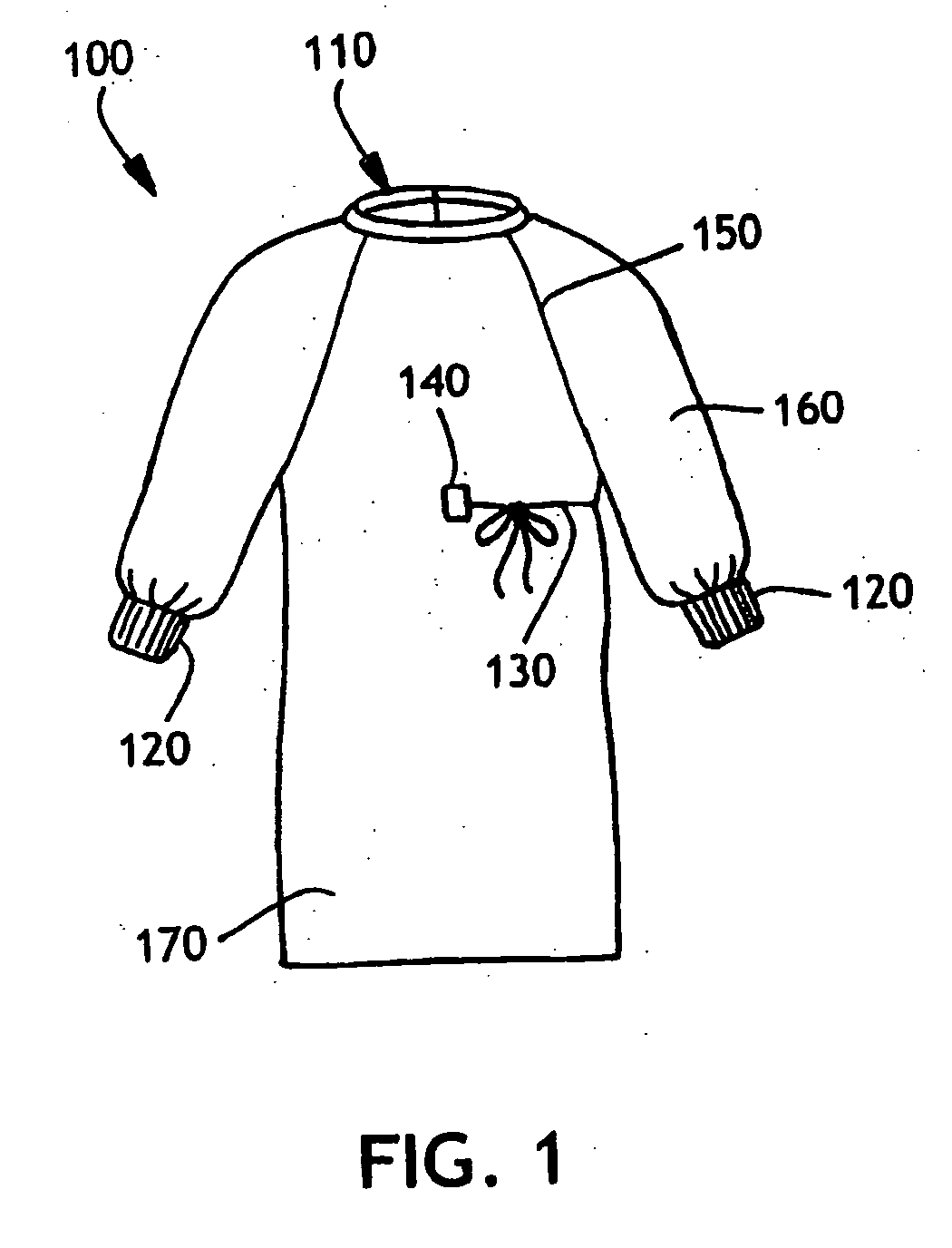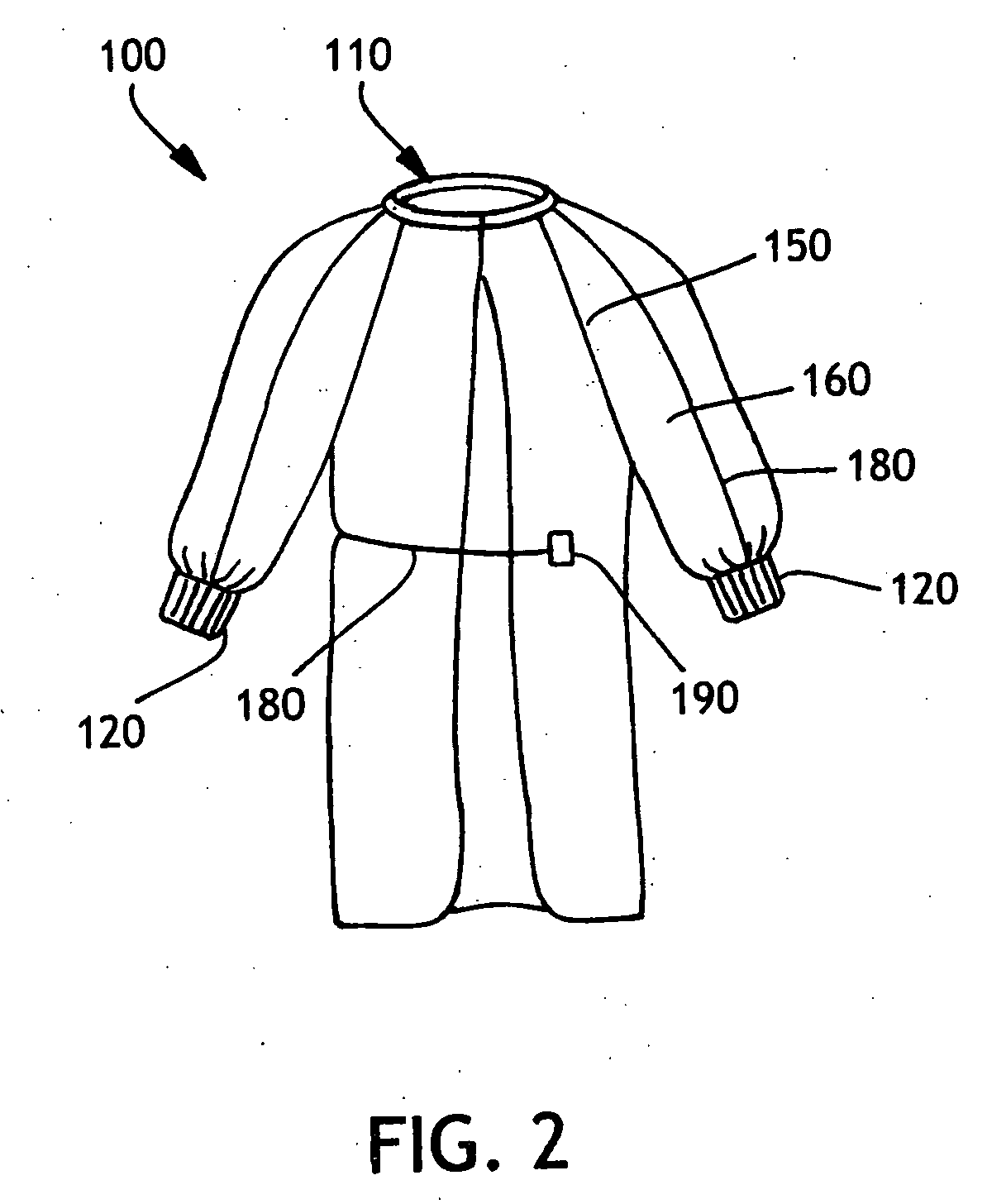Surgical gown tie attachment
a surgical gown and tie technology, applied in the direction of protective garments, garments, applications, etc., can solve the problems of requiring costly laundering and sterilization procedures before reuse, requiring re-use, and supplying another potential source of contamination,
- Summary
- Abstract
- Description
- Claims
- Application Information
AI Technical Summary
Problems solved by technology
Method used
Image
Examples
example 1
Basic Ultra
[0045]A double folded SMS tie cord was bonded to an Ultra® surgical gown at a weld time of 0.175 seconds and a pressure of 65 psi using a point bond pattern. The bonded area was tested according to AATCC 127-1998. Twelve out of 12 samples failed.
example 2
Ultra with Fastape and PUB Bonding
[0046]A double folded SMS tie cord was bonded to an Ultral® surgical gown at a weld time of 0.175 seconds and a pressure of 65 psi using a PUB bond pattern with 25 percent bond area as described above. A 2.5 inch by 4 inch piece of Fastape® adhesive tape was placed below the tie cord bond site prior to bonding. The bonded area was tested according to AATCC 127-1998. Twelve out of 12 samples passed.
PUM
 Login to View More
Login to View More Abstract
Description
Claims
Application Information
 Login to View More
Login to View More - R&D
- Intellectual Property
- Life Sciences
- Materials
- Tech Scout
- Unparalleled Data Quality
- Higher Quality Content
- 60% Fewer Hallucinations
Browse by: Latest US Patents, China's latest patents, Technical Efficacy Thesaurus, Application Domain, Technology Topic, Popular Technical Reports.
© 2025 PatSnap. All rights reserved.Legal|Privacy policy|Modern Slavery Act Transparency Statement|Sitemap|About US| Contact US: help@patsnap.com



